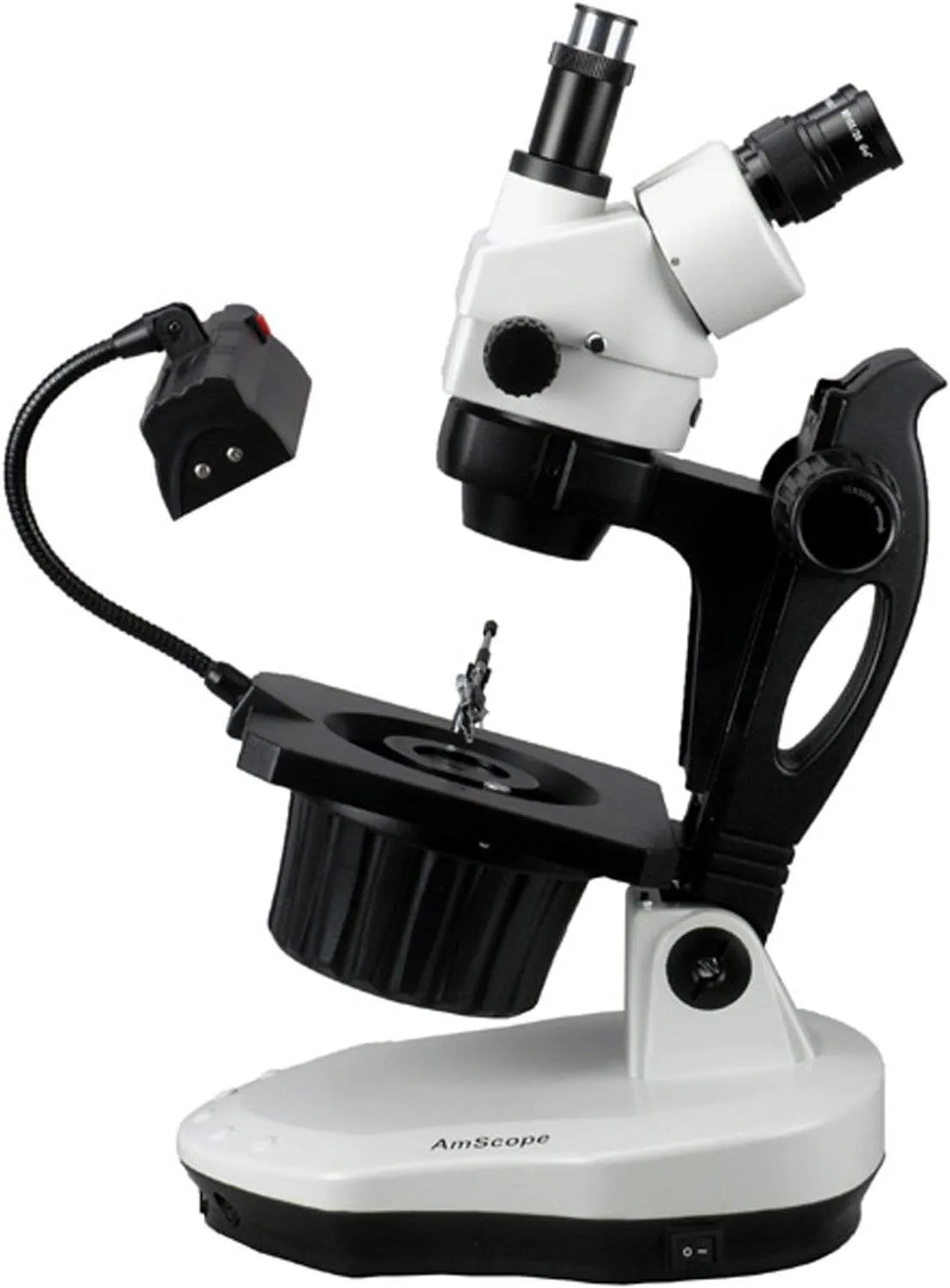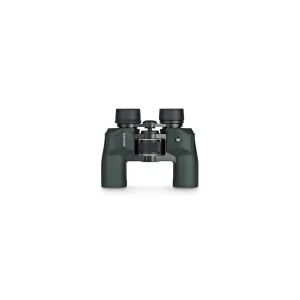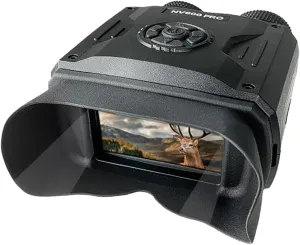- Professional stereo microscope with boom stand has long working distance to enable users to perform work or manipulate large items, including gem and jewelry applications
- Trinocular viewing head with pair of 10x widefield high-eyepoint eyepieces, adjustable interpupillary distance, fixed 45-degree vertical inclination to reduce eye and neck strain, and 360-degree rotation capability to enable sharing
- 0.7x-4.5x zoom objective provides continuous zoom magnification and longer focal length for inspecting large-scale specimens
- Upper and lower light sources provide close-to-daylight illumination for clear color reproduction, and light transmitted through the built-in darkfield condenser is designed for the examination of the inside quality of diamonds.
- Inclined pillar stand with rotatable round mechanical stage measures gem angles, flexible gem clamp secures specimens, and white stage plate provides contrast with dark-colored specimens
The AmScope GM400T gemology stereo zoom microscope has a pair of 10x super-widefield high-eyepoint eyepieces, a 0.7x-4.5x zoom objective, and an inclined pillar stand. The microscope has an overall magnification range of 7x-45x. The trinocular viewing head has an interpupillary range of 55 to 75mm, a 45-degree inclination to reduce eye and neck strain, and 360-degree rotation to enable sharing. The trinocular port can be used as a C-Mount or 23mm photo port (camera sold separately). The WH10x20mm widefield high-eyepoint eyepieces combine with the 0.7x-4.5x zoom objective to provide continuous zoom magnification and a longer working distance for inspecting large-scale specimens that require handling or repair. High-eyepoint eyepieces ease viewing for users who wear glasses, and dioptric adjustment accommodates individual eye-strength differences. A stereo microscope, sometimes called an inspection or dissection microscope, has low magnification and a long working distance that enables users to manipulate the object being inspected.
The microscope has upper and lower rheostat-controlled lighting. The upper (reflected) 7W fluorescent light source is mounted on a gooseneck for examining surface details. The lower (transmitted) 30W halogen light source has a built-in darkfield condenser for examining the inside quality of gems. The inclined pillar stand has a round mechanical stage for measuring gem angles, a flexible gem clamp to secure gems at any angle. The white stage plate provides contrast with dark-colored specimens, and the frosted stage plate allows light to illuminate specimens from below. The inclined pillar stand can be inclined to 38 degrees. It has a round mechanical stage for measuring gem angles, a flexible gem clamp to secure gems at any angle. The white stage plate provides contrast with dark-colored specimens, and the frosted stage plate allows light to illuminate specimens from below.
SpecificationsHeadTrinocularMagnification7x-45xObjective power0.7x-4.5xEyepieces (30.5mm)WH10x20mmTrinocular portC-mount or 23mmOptical working distanceUp to 4"Stereo angle12.4 degreesIllumination typeTransmitted and reflectedLight source7W fluorescent (upper), 30W halogen (lower)FiltersFrosted, whiteCondenserDarkfield with iris diaphragmPower110V-120V
Microscopes are instruments used to enhance the resolution of an object or image. Types include compound, stereo, or digital. Compound microscopes use a compound optical system with an objective lens and an eyepiece. Stereo microscopes show object depth in a three-dimensional image. Digital microscopes are used to display an image on a monitor, rather than looking through a lens. Microscopes can have monocular (one), binocular (two), or trinocular (three) eyepieces, with varying magnification abilities. Magnification ability refers to the size of an image. Resolution, also known as resolvant power, refers to the clarity of the image. The interaction between field of view (FOV), numerical aperture (NA), and working distance (WD) determines resolution. Microscopes can control magnification through a fixed focus, or through a range of adjustments. They can also utilize LED, fluorescent, and mirror light sources to help control viewing capabilities. Microscopes are widely used in education, lab research, biology, metallurgy, engineering, chemistry, manufacturing, and in the medical, forensic science, and veterinary industries.
United Scope manufactures microscopy equipment and accessories under the brand name AmScope. The company, founded in 1996, is headquartered in Irvine, CA.
What's in the Box?
- GM400T stereo zoom microscope with darkfield condenser
- Rotating stage, round
- 10x eyepieces, one pair
- Gem clamp
- Frosted glass plate, round
- White stage plate
- Eye guards, one pair
- Stage clips, one pair
- Power adapter
- Dust cover
- Instructions












